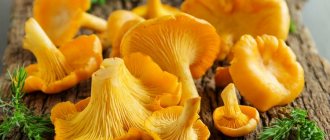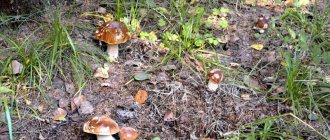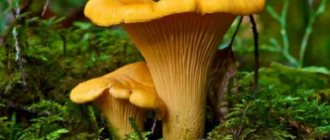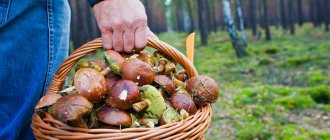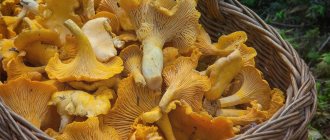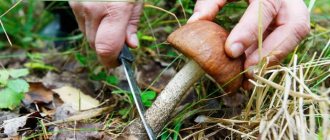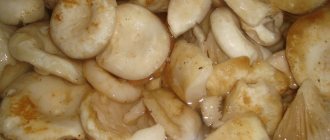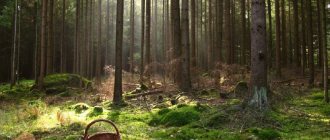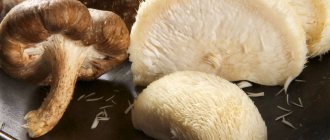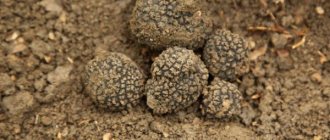The Moscow region is famous for mushroom places and their diversity. This year they are located throughout the region, heading to any forest, you can improve your health by breathing fresh air, catch a wave and enjoy picking a variety of mushrooms.
In the forests of the Moscow region, mushroom lovers find: boletus mushrooms, saffron milk caps, aspen mushrooms, boletus mushrooms, saffron milk mushrooms, milk mushrooms, porcini mushrooms, honey mushrooms. Often mushrooms are located closer to tree trunks.
Go in search of these mushrooms in all directions of the Moscow region railway.
Get it on!
But few people will wait for the high season. Mushroom pickers have already updated the forest paths. And they share the results with each other on social networks. There are still few mushrooms in the west and north-west of the region. “There is nothing in the forest in front of Fryanovo, only blueberries,” writes Tatyana Solovyova from the Shchelkovsky district. She is echoed by Tatyana Rodionova from Chernogolovka: “And beyond Chernogolovka there is nothing.” But those whose houses and dachas are in the south and southeast are already in full swing cooking aromatic mushroom soups. “In the Yegoryevsky district, near the village of Kamenskaya, along the edge of the forest there are boletus, boletus, and chanterelles. They’re young, they’re just getting started,” Natalya Ilyina shares her joy. Things are even better in Stupino. “The village of Tyutkovo: 20 white boletus, five boletus, two aspen boletus, a basin of russula and three buckets of chanterelles in two and a half hours,” reports Ksenia Letoshneva. And the most positive message was left by Igor Borisov from Chekhov: “88 whites!”
Last year, an official map of mushroom places appeared in the Moscow region, which was compiled by both foresters and mushroom picking experts who visit thematic Internet forums. Initially, 34 points were indicated on the map. This year the map was updated, adding 38 more. Of course, there are many more places in the region where you can indulge yourself in quiet hunting. But foresters say that the map is designed primarily not for local residents of villages near Moscow, who know all the mushroom clearings in the area without any hints, but for Muscovites and those who come to the forest from cities close to the Moscow Ring Road; these mushroom pickers, as a rule, walking through the forest blindly. And they plan the route so as not to waste a lot of time on the road. The hints on the map will be useful for them.
And another important point: all mushroom routes indicated on the map will be patrolled daily by foresters and rescuers. Because the forests, for example, in Stupino, from where mushrooms are carried in buckets during the season, are so crisscrossed with old roads that it is very easy to get twisted and lose your way home. And in the Shatura village of Northern Griva, where, knowing the places, you can pick mushrooms even out of season, they search for lost travelers for several days - the forests there are heavy, continuous, without landmarks and stretch all the way to the Vladimir region.
According to official data from the Moscow Regional Fire Rescue Service, 1,027 people got lost in the forests near Moscow last year. Of these, only 104 left the forest on their own. 16 people were found dead, 14 have not yet been found. The rest were taken out by rescuers. “The indiscretion of our citizens is sometimes astonishing: they go into the forest without phones, without water, alone at the age of 90, with small children,” says Lisa Alert volunteer Alexander Odoevsky. And this year, rescuers have already raised the alarm more than once. We were looking for lost lovers of quiet hunting in Taldom, Sergiev Posad, Dmitrov.
By the way
Residents of the Moscow region consider their region rich in mushrooms, but experts have a different opinion. Thus, the chairman of the Union of Mushroom Pickers of Russia, mycologist Mikhail Vishnevsky, speaks very modestly about the mushroom potential of the Moscow region. “You can always collect for yourself, but in terms of industrial procurement, the region is in a mushroom “failure,” the expert is sure. According to him, the areas richest in mushrooms are those located in the west - starting from Zvenigorod and the south of the region - starting from Serpukhov. And the mycologist is also surprised that residents of the Moscow region have absolutely no regard for the autumn row mushroom, which grows until frost. This, of course, is not a noble boletus, but it is quite a tasty edible mushroom. There are a lot of rows in the forests near Moscow, but mushroom pickers don’t take them.
Infographics "RG": Anton Perepletchikov/Irina Rybnikova
Proper collection of mushrooms will help protect yourself from poisoning
The most useful mushrooms are young ones. This can be determined very simply. If the cap of the mushroom is open, that is, turned outward, then it is already overripe and has no nutritional value. Mushrooms that have been damaged by sunlight should not be cut. Their structure is damaged and such mushrooms can cause poisoning. The same can be said about mushrooms cut near highways. Exhaust from cars is very easily absorbed by the porous structure of mushrooms.
The best time to pick mushrooms is early in the morning. Since the earth has not yet warmed up and the air temperature is quite low, these are the most comfortable conditions for mushrooms. If the mushroom seems unfamiliar, then there is no need to take risks; it is better to avoid it and look for known varieties.
How to pickle saffron milk caps (video)
As you can see, the mushroom picking season begins much earlier than many expect. Moreover, in May there are usually quite favorable conditions for their growth. Therefore, spring harvests are often much more abundant than summer and autumn ones. Therefore, you just need to know which mushrooms will be beneficial and which will be harmful.
0 Elena 04/22/2019 11:20 pm Why are you doing this with the lines and when do they “have time” to accumulate toxic substances?
Their season is very short. In the common mushroom, the poisonous substances are not accumulated, but innate, boil 3 times and fry with sour cream - a wonderful mushroom. In general, many people consider giant string to be non-poisonous and do not boil it before frying (I still boil it out of sin). Very interesting, who are the summer lines? And have you tried the “low-poisonous” (but inedible) autumn ones? )))) Puffball and annual are different mushrooms, although they are relatives; among the puffballs, by the way, there are some that are inedible. They appear later and grow until autumn. In general, ehhh... Quote
How to get there by car
- Drive from Vnukovo to the junction nearby and turn towards Ankudinovo. This is a good place to park your car near any of the nearby villages. Here you can also collect an impressive amount of mushrooms.
- An alternative option is to go to Krekshino, turn right, stop near Aprelevka and comb the local forests.
- Along the Minsk highway, focusing on the Zhavoronok station, drive a little north.
- Drive around New Riga, and as soon as you get to Novy, turn towards Novoarkhangelsk, where there is a place for a car next to the river and go in search of “trophies” in the forest park.
- If you drive along Leningradka or Pyatnitsky, you can stop in the Mitino or Khimki area, but it is better to get to Eleno, which is behind Sheremetyevskoye Highway and Black Gryad.
- You can take the Gorkovskoye Highway (alternatively the Nosovikhinskoye Highway), get to Vlasovo or Subbotino, where there are good mushroom glades in the vicinity.
Mushrooms growing in the Moscow region
Mushroom places in the Moscow region in 2022 are rich in all types of mushrooms: from the most commonly growing to the rare. However, there are also poisonous ones. To collect mushrooms in the forest, you need to know not only the places where they grow, but also which species are edible and safe for humans.
Something to remember!
Mushrooms are not plants, they belong to the category of living organisms of the spore type, so they can be dangerous. Inedible mushrooms contain toxins that can lead to intoxication and even death.
Many types of edible mushrooms grow in the most mushroom places in the Moscow region. Among them are white, tasty milk mushrooms and boletus, known for their nobility, simple morels and violins, and many others.
You need to beware of such types of mushrooms as fly agaric, toadstool, satanic, entoloma, russula emetic, spicy champignon, gray floater, paneolus, false chanterelle, common vesel.
By the way, you can make very tasty mushroom caviar from mushrooms - be sure to try it.
Benefit
Forest May mushrooms are beneficial for the human body. They have a lot of fiber, microelements and vitamins. They consist of 90% water, are low in calories (about 22 kcal per 100 g), and are used for dietary nutrition.
The fiber in their composition quite fully replaces a product of animal origin - meat. They stabilize blood pressure, blood sugar levels and stimulate brain activity.
They are successfully used by pharmacists to create medicines for various diseases.
Edible mushrooms
Of the edible mushrooms in the Moscow region in May, you can stock up on morels, sulfur-yellow and scaly polypores, round and oblong bigheads (puffballs), boletus mushrooms, spring honey mushrooms, May mushrooms and many others.
Morels
Morels (Morchella) appear in April and continue to bear fruit in May. They can be found in both coniferous and deciduous forests; they especially like to settle in places of fires. They are easily recognized by their specific bell-shaped cap, which consists of uneven cells resembling a honeycomb of bees. Mushrooms can be brownish-yellow or brown in color and up to ten centimeters in diameter. They are characterized by thin and brittle white pulp. Morels are conditionally edible, so they must be boiled for at least fifteen minutes before frying and stewing. Dried mushrooms can be used for preparing various dishes only after three months from the start of drying.
Among the edible mushrooms in the Moscow region in May, you can stock up on morels
Raincoats
Puffballs or bigheads (Lycoperdon) are mushrooms with a specific round or pear-shaped, closed fruiting body. Depending on the type, they can have a white, grayish or yellow surface, have a wide variety of sizes and weights (up to two kilograms). Appearing at the end of May, round and oblong bigheads can be found in any forest.
The habitat of the round bighead (Calvatia utriformis) is deciduous and mixed forests, as well as meadows and fields. It has a spherical, flattened fruiting body up to twenty centimeters in diameter with a false stalk up to sixteen centimeters in height. It has a thick, rough shell covered with warts. It is white in color, changing to yellow as it grows. The white flesh also turns yellowish-green or dark brown over time.
The habitat of the round bighead is deciduous and mixed forests, as well as meadows and fields
The fruiting body of the loggerhead (Calvatia excipuliformis) has the shape of a club. The mushroom has a modest size, its height reaches fifteen centimeters, the diameter of the upper part is no more than five. Its white surface is densely covered with growths; in older specimens they fall off and the color changes to brown. The flesh turns from white to greenish-brown.
Only young bigheads are used for frying, stewing and boiling; old mushrooms become completely inedible. They can also be dried and made into mushroom powder, which is used for making soups and as a seasoning for various dishes.
The fruiting body of the oblong bullhead has the shape of a club
Polypores
The yellow sulphur fungus (Laetiporus sulphureus), popularly called chicken fungus or chicken fungus, can be found in deciduous forests on decayed stumps and sometimes on healthy trees, which they destroy over time by consuming their nutrients. It can be recognized by its teardrop shape and yellow color, which eventually turns orange. These mushrooms can reach thirty centimeters in diameter. Only young specimens with juicy, thick, elastic yellowish flesh can be eaten.
The scaly polypore (Polýporus squamósus) is characterized by a fan-shaped cap with a diameter of up to forty centimeters. This species is very picturesque; its cream-colored caps are covered in concentric rings with black and brown scales. The fungus grows on rotten wood and also climbs elms, sometimes very high, which is why it is often called the elm mushroom. You need to collect mushrooms with fleshy, juicy caps that, when cut, exude the aroma of fresh baked goods or honey.
Polypores can be found on healthy trees, which they destroy over time by consuming their nutrients.
Polypores are classified as conditionally edible, but at the same time delicious mushrooms that have a number of medicinal properties. Before cooking, they need to be boiled for at least an hour, and then they can be fried, stewed, or added to various salads and toppings.
Meadow honey mushrooms
Honey mushrooms (Marasmius oreades) are edible agaric mushrooms and grow only in open, well-lit areas, for example, in a meadow or forest edge. Mushrooms have a very strong, pleasant aroma, combining almonds and cloves. Their hemispherical caps become slightly concave as they grow and reach nine centimeters in diameter. Their color ranges from pale yellow to reddish brown. Cylindrical legs the color of the cap grow no more than eleven centimeters in height. The thin flesh may be white or yellowish. In terms of cooking methods, you can do anything with honey mushrooms : fry, stew, bake, salt and pickle. But for this you need to use only caps, since their legs are very hard.
Meadow honey mushrooms are edible agaric mushrooms and grow only in open, well-lit areas
May mushroom
May mushroom (Calocybe gambosa) or May row, which is an edible agaric mushroom of the fourth category, can be called a real decoration of this month. It is not very large, but strong and beautiful, resembling champignons in appearance. It is collected on the edges or among sparsely located trees of deciduous forests. The caps are white or yellowish in color, grow up to ten centimeters in diameter and initially have a hemispherical shape, which develops into a flat one. The smooth, thick white or cream legs reach no more than seven centimeters in height. The white flesh is quite dense. The May mushroom has a pleasant smell and a bright mushroom taste , so soups are made from it, used for frying, stewing, pickling, pickling and drying.
May mushroom is collected on the edges or among sparsely located trees of deciduous forests
Mushroom calendar for autumn
September: the first autumn month is always joyful for mushroom pickers. Summer mushrooms are growing, autumn mushrooms are appearing en masse. After two weeks, some species will disappear, but you can still collect a lot of honey fungus, trumpets, white cape, boletus, pigweed, and white cape.
October: Mushroom season ends at the end of October. Already in the second half of the month, the average air temperature drops to +4..+5 degrees, frost sets in, and it’s too late to pick mushrooms. However, if you look hard enough, you can find honey mushrooms under the foliage, saffron milk caps, hornworts and white mushrooms.
